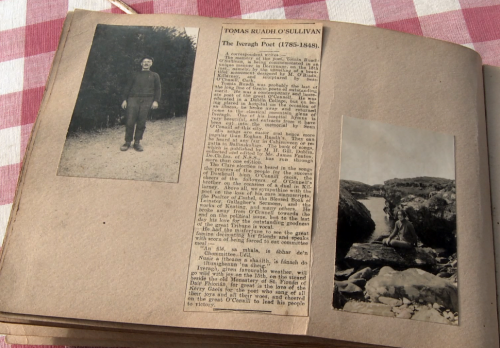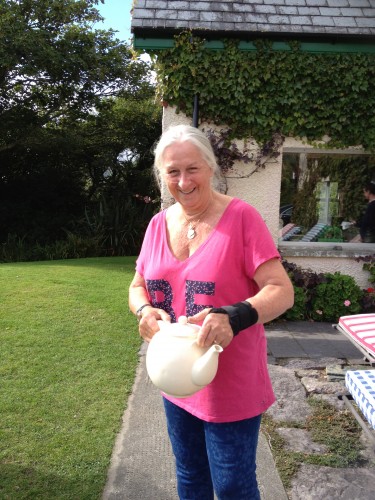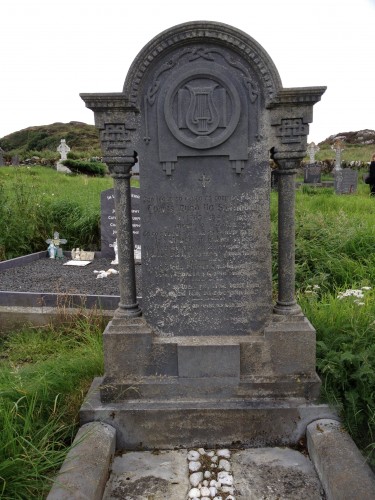The weather was beautiful on our tenth day of filming. We were going to film the air Amhrán na Leabhar, or Song of the Books, near Portmagee, County Kerry. A few days earlier, we met with traditional fiddle player Matt Cranitch, who plays this air on the fiddle and he explained what he knew of the history of the melody and the story.

Tomás Rua Ó Súilleabháin (1785-1848) was a poet, schoolteacher, fiddler and dancing master. He worked as a hedge schoolmaster on the Iveragh peninsula in West Kerry. Hedge schools were schools where Gaelic brehons, musicians and storytellers secretly taught children Irish history, tradition and told tales of the children’s ancestry. At some point he moved from Derrynane to Portmagee and he put all his treasured books and all his belongings on a boat and went by road himself. The boat however did not withstand the gale and sank with the loss of the books. Amhrán Na Leabnar, also known as Cuan Bhéil Inse, or Valencia Harbour, is the lament poem he composed over this loss. Tomas Ó Canainn’s translation of the Irish Gaelic lyric begins:
By Valentia harbour I happened once
Near sweet Goleen Dairbhre
To be the master in Portmagee
Where ships set sail for the ocean deep.
Soon all had the sorrowful story then
Of the sturdy craft, lost at Owen Finn,
Sad was my heart for the ship that failed;
Better this land had it survived the gale.
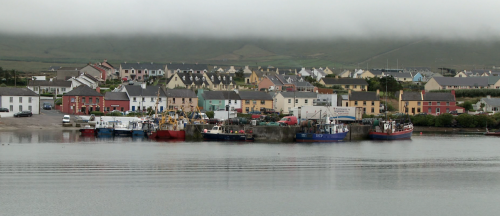
The tune itself is also popular as an instrumental tune and therefore it probably existed before the song was written.
While we were driving to Portmagee, we came accross Derrynane, where the boat had left, and decided to go and see what it looked like. We drove down and stopped for tea at the house of the well known 19th century political leader Daniel O’Connell. Whilst there a fine woman who saw Maarten carrying his camera said “you look industrious!” Her name was Geraldine. Ilse asked her if she knew of Tomás Rua Ó Súilleabháin. She said: ”Yes, he is buried opposite where I live, in a cemetery by a 10th century monks chapel. Go to the harbour and across the beach and you will find the grave there.”
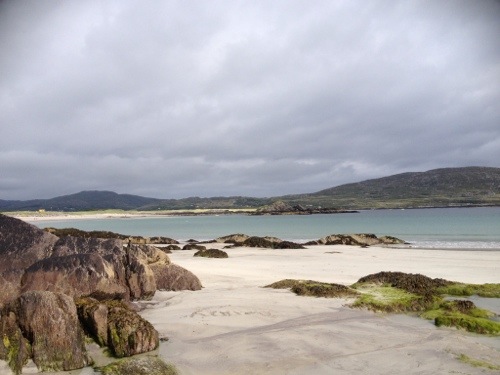
There is something very special about walking across a beach to get to work….
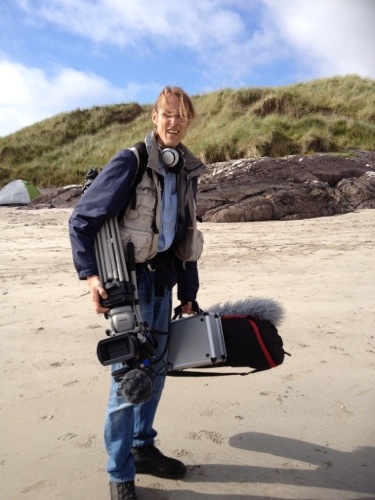
We followed her indications and after much searching found the grave. We set up and Ilse played the air at the grave of the poet. Other people were visiting the graveyard, and some stopped to listen. While Maarten set up the different shots, Ilse told the visitors the story behind the air. It was very moving to hear this lament being played in the graveyard!

We met Geraldine again at the harbour and she invited us over for tea. She showed us a newspaper article from 1929, from the descendants of Tomás Ruah Ó Súilleabháin. In the paper it says: “Above all we sympathize with the poet on the loss of his rare manuscripts, the Psalter of Cashel, the Blessed Book of Leinster, Gallagher’s Sermons, and the works of Keating and many others.”
